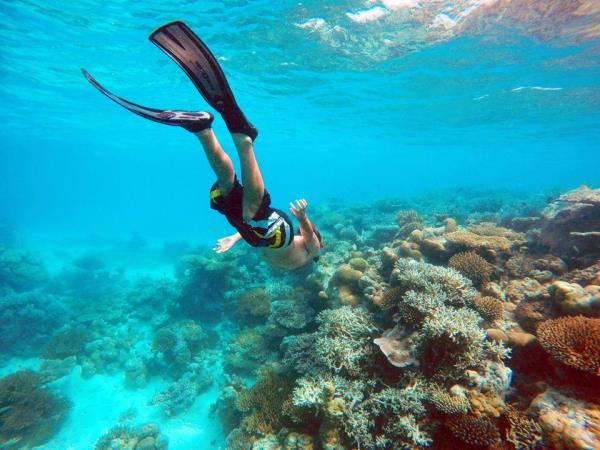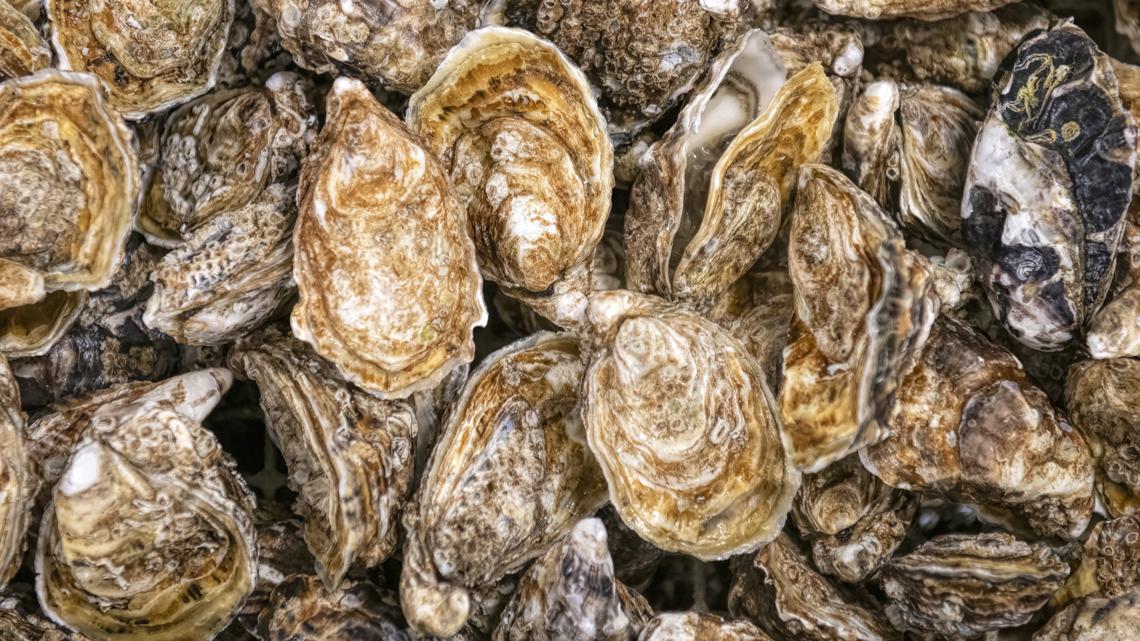Coral Reef Awareness – The Suburban Times

Report on Coral Reef Ecosystems and Sustainable Development Goals
Introduction: Educational Initiatives and SDG Alignment
In observance of Coral Reef Awareness Week (July 21-27), the Point Defiance Zoo & Aquarium has launched the “Coral Reef Up-Close” habitat. This initiative directly supports the United Nations Sustainable Development Goals (SDGs), primarily focusing on SDG 14: Life Below Water by showcasing the intricate biodiversity of coral ecosystems. Furthermore, by providing an immersive educational experience, the exhibit contributes to SDG 4: Quality Education, fostering public awareness and promoting conservation action necessary to protect these vital marine environments.
Analysis of Key Species and their Contribution to SDG 14
The new habitat highlights several key species whose roles are fundamental to maintaining the health and resilience of coral reefs. The survival of these species and the integrity of their habitat are central to achieving the targets of SDG 14, particularly Target 14.2, which calls for the sustainable management and protection of marine and coastal ecosystems.
-
Bicolor and Redfin Anthias
These fish are integral to the reef’s vitality. Their constant movement enhances water circulation, distributing essential nutrients and oxygen. This function directly supports the health of the coral and other organisms, contributing to a robust and productive ecosystem as envisioned by SDG 14.
-
Razorfish
By consuming small invertebrates and plankton, Razorfish help maintain the delicate balance of the reef’s food web. Their reliance on coral for camouflage underscores the importance of habitat preservation. Protecting such species is essential for maintaining the biodiversity and ecological stability targeted by SDG 14.
-
Copperband Butterflyfish
This species acts as a natural guardian of coral health by consuming pests like tube worms. This specialized feeding behavior prevents overgrowth and damage to coral colonies, directly contributing to the resilience and preservation of the reef structure, a key objective of SDG 14.2.
-
Lawnmower Blenny
The Lawnmower Blenny performs a critical maintenance role by consuming algae that would otherwise smother corals, inhibiting their access to sunlight. This function is vital for coral growth and survival, thereby safeguarding the foundational habitat for countless other marine species and supporting the goals of SDG 14.
-
Hermit Crabs
As part of the reef’s sanitation crew, hermit crabs manage organic waste and debris. This cleaning service is crucial for preventing pollution and maintaining water quality within the ecosystem, aligning with SDG 14.1, which aims to reduce marine pollution of all kinds.
-
Banded Coral Shrimp
This shrimp engages in symbiotic cleaning relationships, removing parasites from fish. This behavior reduces disease and improves the overall health of the fish population, which in turn supports a more stable and biodiverse marine ecosystem, a core principle of SDG 14.
-
Acropora Coral
Acropora coral is a keystone species, acting as the primary architect of the reef. It provides critical shelter, breeding grounds, and protection for a vast array of marine life. The health of Acropora is a direct indicator of the ocean’s condition and its vulnerability to climate change highlights the interconnectedness of SDG 14 (Life Below Water) and SDG 13 (Climate Action). Protecting these corals is fundamental to conserving marine biodiversity (SDG 14.5) and ensuring the long-term viability of coastal ecosystems.
Conclusion: The Role of Public Aquariums in Advancing the SDGs
The “Coral Reef Up-Close” habitat serves as a powerful tool for advancing the Sustainable Development Goals. By illustrating the complex interdependencies within a coral reef, the exhibit underscores the urgent need for conservation efforts to meet the targets of SDG 14: Life Below Water. It functions as a platform for SDG 4: Quality Education, translating complex ecological principles into an accessible format that can inspire public action and a commitment to protecting global marine resources for future generations.
SDGs Addressed in the Article
-
SDG 14: Life Below Water
- The entire article is dedicated to the coral reef ecosystem, a critical component of marine life. It describes the habitat (“vibrant world of coral reefs”), the species that inhabit it (fish, crabs, shrimp), and the foundational role of coral itself (“Acropora corals are essential reef architects”). This directly connects to the goal of conserving and sustainably using the oceans, seas, and marine resources.
-
SDG 4: Quality Education
- The article’s context is “Coral Reef Awareness Week” and the opening of a new educational exhibit, the “Coral Reef Up-Close habitat” at the Point Defiance Zoo & Aquarium. The stated purpose is to allow guests to “learn more about their vital roles in reef ecosystems.” This highlights the role of institutions like zoos and aquariums in educating the public about environmental issues and promoting sustainable development.
Specific Targets Identified
-
Target 14.2: By 2020, sustainably manage and protect marine and coastal ecosystems to avoid significant adverse impacts, including by strengthening their resilience, and take action for their restoration in order to achieve healthy and productive oceans.
- The article supports this target by detailing the intricate relationships that maintain a healthy reef. For example, it explains how the lawnmower blenny prevents algae from “smothering coral colonies,” how the copperband butterflyfish eats “coral pests,” and how banded coral shrimp control “parasite populations.” This focus on the mechanisms of ecosystem health and balance aligns with the goal of protecting and managing these environments.
-
Target 4.7: By 2030, ensure that all learners acquire the knowledge and skills needed to promote sustainable development, including, among others, through education for sustainable development and sustainable lifestyles…and appreciation of…biodiversity.
- The article is a direct outcome of an initiative aimed at fulfilling this target. The “Coral Reef Awareness Week” and the zoo’s new habitat are educational tools designed to increase public knowledge and appreciation for the biodiversity of coral reefs. The article itself functions as educational material, explaining the specific roles of various species to foster a deeper understanding of this ecosystem.
Indicators Mentioned or Implied
-
Indicator for Target 14.2: Health of keystone species as a measure of ecosystem condition.
- The article explicitly states, “Their [Acropora corals] health is a strong indicator of a reef’s overall condition.” This directly proposes a measurable indicator for assessing the health and resilience of the marine ecosystem, which is central to Target 14.2. The presence and health of the other species described (like the copperband butterflyfish controlling pests or the lawnmower blenny controlling algae) also serve as implied indicators of a balanced, functioning ecosystem.
-
Indicator for Target 4.7: Implementation of educational programs on sustainable development and biodiversity.
- The article describes the existence of specific educational initiatives: the “Coral Reef Awareness Week” and the “Coral Reef Up-Close habitat.” The creation and promotion of such programs are a direct, albeit qualitative, indicator that an institution is actively working to mainstream education for sustainable development and biodiversity appreciation, as outlined in Target 4.7.
Summary of SDGs, Targets, and Indicators
| SDGs | Targets | Indicators |
|---|---|---|
| SDG 14: Life Below Water Conserve and sustainably use the oceans, seas and marine resources for sustainable development. |
Target 14.2: Sustainably manage and protect marine and coastal ecosystems to avoid significant adverse impacts. | Implied Indicator: The health of Acropora coral, which the article states is a “strong indicator of a reef’s overall condition.” |
| SDG 4: Quality Education Ensure inclusive and equitable quality education and promote lifelong learning opportunities for all. |
Target 4.7: Ensure all learners acquire knowledge and skills needed to promote sustainable development, including education for sustainable development and appreciation of biodiversity. | Implied Indicator: The existence and promotion of educational initiatives like “Coral Reef Awareness Week” and the “Coral Reef Up-Close habitat” at the zoo. |
Source: thesubtimes.com

What is Your Reaction?
 Like
0
Like
0
 Dislike
0
Dislike
0
 Love
0
Love
0
 Funny
0
Funny
0
 Angry
0
Angry
0
 Sad
0
Sad
0
 Wow
0
Wow
0












































































